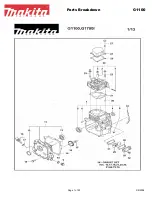
Beijing Huahuan Electronics Co., Ltd.
H0FL-EthMux.SA1601/SA1602 User’s Manual V1.3
5
synchronization. In other words, although the signals coming in and going out of
the same E1/T1 interface are nominal bit rate, there can be 100ppm frequency
difference between them. In this case, the receiving end must reconstruct timing
mode according to E1/T1 stream transferred from peer end, this process is
Adaptive Timing mode. H0FL-EthMux.SA1601/SA1602 uses timing recovery
technique; the output E1/T1 has low jitter and high frequency stability; typical
frequency offset is within 5ppm and clock jitter is below 0.1UI, which can meet
most applications,
Because IP network transmission data packets have great randomness,
although the adaptive timing can restore the clock with high stability and low
jitter, the longtime wander is big. The wander does not affect the normal work of
the reception device which adopts the slave timing mode, but for some
applications, such as switches using the internal clock, may cause the overflow
of the frame memory in input port, thus the slip frame will occur.
Therefore, H0FL-EthMux.SA1601/SA1602 provides another timing mode,
loopback timing mode. In this mode, H0FL-EthMux.SA1601/SA1602 uses the
clock extracted from E1/T1 input port signal to reconstruct E1/T1 output stream,
the wander formed in network transmission can be absorbed completely by
internal memory of H0FL-EthMux.SA1601/SA1602. Once the input signal loss
fault,
it
will
automatically
switch
to
adaptive
timing.
H0FL-
EthMux.SA1601/SA1602 provides two kinds of timing modes.
H
0
FL
-
EthMux
IN
OUT
Timing
Recovery
Adaptive Timing
H
0
FL
-
EthMux
IN
OUT
Timing
Extraction
Buffer
Cache
E1/T1
Interface
E1/T1
Interface
Loopback Timing
Figure 1.3-1 Timing modes














































